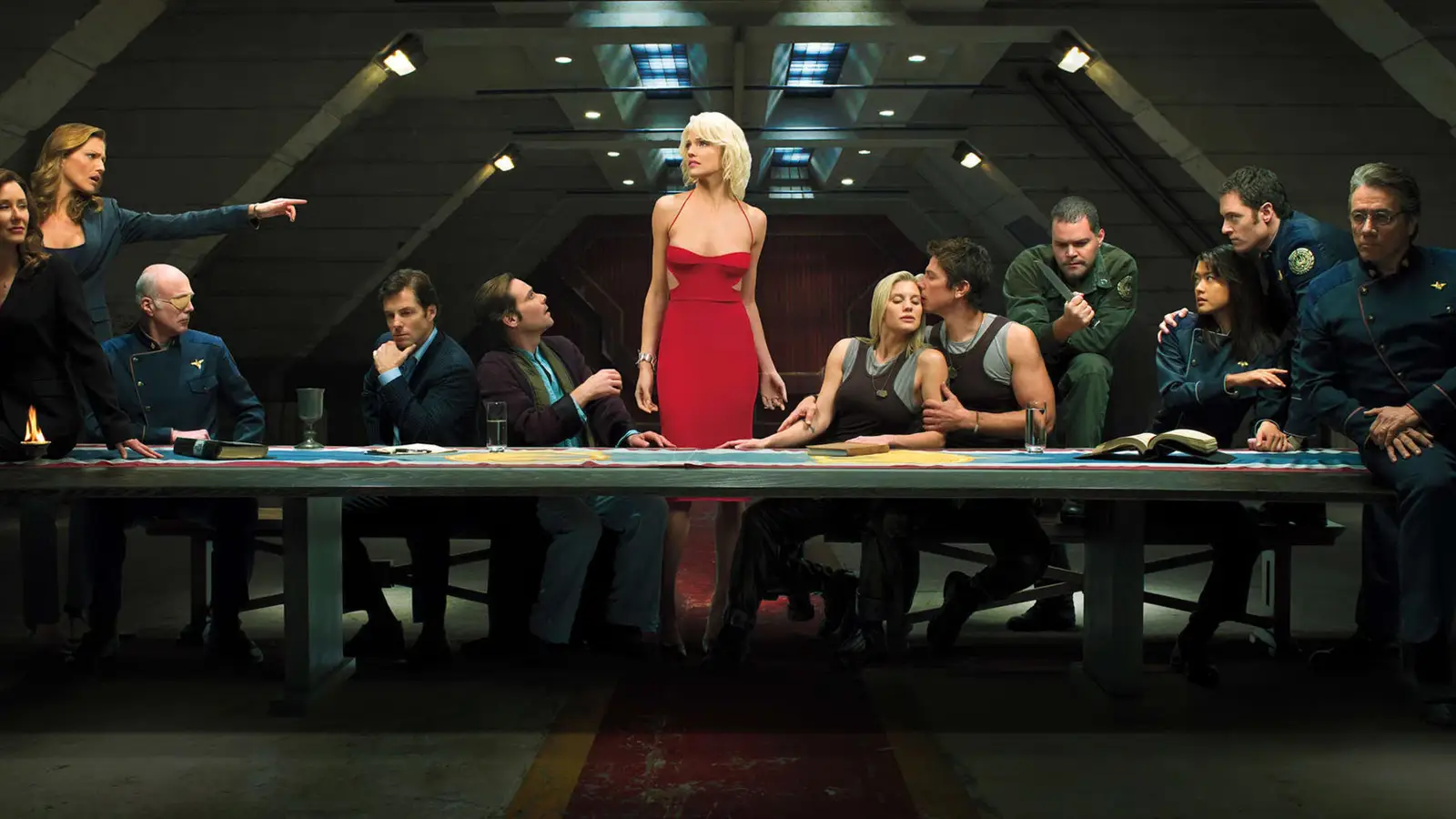Copyright Screen Rant

Battlestar Galactica's roots can be traced all the way back to a century-old sci-fi movie, and the two share a surprising number of similarities. One of the best changes Ronald D. Moore made to Battlestar Galactica's formula was swapping out the hulking metallic cylons for androids indistinguishable from humans. Throughout Battlestar Galactica's four seasons, the entire premise revolved around the doubt and distrust that stemmed from being at war against robots with human faces. From the cylons' perspective, the benefit of not looking like toasters was obvious. After infiltrating the human colonies, the cylons could influence their opponents' politics, their beliefs, their direction and, ultimately, manipulate their fleshy counterparts for the cylon cause. While the outside might've been a little more polished, the bones of this story run right back to the very beginnings of the science-fiction genre. Metropolis Started A Sci-Fi Trope Battlestar Galactica (& Others) Would Follow Fritz Lang's Metropolis stands as one of the truly groundbreaking milestones of science-fiction's early years. Its vision, budget, themes, and visuals started an evolution for feature-length productions within the sci-fi genre, and it's astounding how much of Metropolis' DNA can still be found in movies and TV a century later. Battlestar Galactica has an especially close relationship with Lang's masterpiece. Metropolis did not contain the first depiction of a robot onscreen, but it did pioneer the idea of robots as a deception. The plot sees inventor Rotwang create a "Man-Machine" he intends to give a human face. Local tyrant Joh Fredersen instructs Rotwang to mold his robot to match the visage of Maria, the leader of a growing rebellion against Fredersen's Metropolis. In doing so, Fredersen hopes to manipulate his discontented workers and stave off the revolution that was bubbling under Maria's influence. The robot being in Maria's form also leads to a tragic case of mistaken identity, as Joh's son is in love with Maria and spies the robot tenderly embracing his father. Ultimately, Rotwang's creation is used to oppress and threaten the working citizens of Metropolis. This concept of robots masquerading as humans has echoed across the sci-fi arena over the past 100 years, but Battlestar Galactica serves as an especially close parallel. As with Metropolis, the masterminds behind the steely impostors utilized their human-shaped mechanical creations to divide populations as a means of oppression. The single fear at the heart of Battlestar Galactica - that robots may be among us in secret, controlling our behavior - is the very same fear first depicted so viscerally by Fritz Lang in 1927. Other Ways Battlestar Galactica Continues The Spirit Of Metropolis Rotwang's Man-Machine acting as the prototype cylon is the most obvious comparison, but Battlestar Galactica's similarities to Metropolis run even deeper. In both stories, human love is the impetus for creating the machines in the first place. In Metropolis, Rotwang's robot is not originally intended to impersonate Maria, but to recreate his deceased love, Hel. In Battlestar Galactica, the first of the human-like cylon models, Cavil, is modeled after his creator's father. The message is the same in both cases: "playing god" by trying to revive the dead has a good chance of backfiring. Metropolis tells an inherently class-centric story. It's ultimately about how the city's ruling elite learns to stop treating its workers as a literal underclass. In a less overt way, Battlestar Galactica draws the same battle lines between cylons and humans, with the machines the "superior" class, and the Colonial Fleet's embattled humans adopting the workers' role. Both tales are about how these two sides learn to coexist rather than one defeating the other. The central message of Metropolis is the necessity of a "mediator" - an individual of prophecy who will lead both sides to peace. In this case, that figure of prophecy is Freder Fredersen, Joh's son. Again, Battlestar Galactica dips into the Fritz Lang playbook here. The notion of prophecy plays a major role in Battlestar Galactica, with President Roslin viewing herself as the savior of her people, foretold by the Book of Pythia. The "mediator," however - Battlestar Galactica's own Freder Fredersen - is really Starbuck, who interprets the mysterious music and leads the survivors to their new home. Battlestar Galactica Proves One Fear Has Never Left Us The similarities between Metropolis and Battlestar Galactica, released almost a century apart, highlight humanity's deep-seated fear that we will one day create something that mimics us so perfectly, we render ourselves obsolete. It's amazing to think that even in the 1920s, there was a bleak vision for the possibilities of technology. Even when Battlestar Galactica premiered in the 2000s, such things sat firmly within the realms of science-fiction.



